33 Flavorful Asian Porridges to Warm Your Soul
Asian porridges represent a comforting culinary tradition that spans countless cultures and generations.
Warm, nourishing, and deeply satisfying, these dishes transform simple ingredients into extraordinary meals that speak to the heart.
Each region brings its unique twist to this humble comfort food, blending local flavors and time-honored techniques.
Rich textures and complex seasonings elevate these porridges beyond mere sustenance, turning them into beloved cultural expressions.
Families pass down recipes through generations, preserving memories and connections with every steaming bowl.
Regional variations showcase the incredible diversity of ingredients, cooking methods, and cultural significance embedded in these beloved dishes.
The versatility of Asian porridges makes them both a nutritious meal and a profound culinary experience.
Here are 33 great Asian porridges that will tantalize your taste buds and warm your soul:
Great Asian Porridges for Cozy Comfort
Comfort can be found in a bowl of porridge anywhere in Asia. Grains, toppings, and broths change from city to village, but warmth remains constant.
Bubur Ayam
Bubur ayam is Indonesia's hearty breakfast rice porridge blending Chinese culinary influences with local ingredients and flavors.
Originating from traditional Chinese congee, this comforting dish transforms simple white rice into a creamy, dense base through slow cooking in rich chicken broth.
Indonesian cooks typically use darker, bone-in chicken pieces that infuse deep flavor into the porridge while being shredded as a primary topping.
Savory condiments like fried shallots, green onions, and soy sauce enhance the porridge's complexity and texture.
Vendors often add crispy crackers or additional protein such as boiled eggs to create a more substantial meal.
Street markets and home kitchens across Indonesia serve this morning staple with regional variations that reflect local taste preferences.
Families and workers start their day with this warm, nourishing bowl that connects culinary traditions and provides essential morning energy.
Affordable and quick to prepare, bubur ayam represents a fundamental comfort food in Indonesian cuisine.
Arroz Caldo
Arroz caldo is a hearty Filipino rice porridge steeped in rich cultural history and warming comfort.
Spanish colonial influences transformed this Chinese-inspired dish into a uniquely Philippine culinary treasure.
Ginger-infused broth defines its distinctive flavor profile, creating a deeply aromatic base for tender chicken pieces.
Soft rice grains simmer slowly, absorbing complex layers of seasoning and warmth.
Filipino families traditionally serve this soul-satisfying meal during breakfast or as a midday repast.
Garlic, green onions, and hard-boiled eggs frequently accompany the porridge as complementary garnishes.
Each steaming bowl connects generations through its simple yet profound nourishment.
Three Color Dessert (Che Ba Mau)
Che ba mau stands as a rainbow-layered Vietnamese sweet treat combining multiple textures and colors through carefully arranged ingredients like vibrant beans, jellies, and tapioca pearls suspended in creamy coconut milk.
Vietnamese dessert lovers celebrate this refreshing delicacy for its visual appeal and complex flavor profile.
Three distinct layers typically showcase red, yellow, and green hues that create a striking visual presentation.
Street vendors and home cooks craft this dessert with regional variations that reflect local ingredient availability.
Cold servings are especially popular during warm summer months when people seek refreshing sweet snacks.
Coconut milk provides a rich, smooth base that binds the colorful components together.
Crushed peanuts or additional toppings often complete the final garnish, adding extra crunch and flavor complexity.
Lugaw
Lugaw ranks as a comforting Filipino rice porridge designed for easy consumption during illness or recovery.
Philippine families traditionally prepare this gentle dish with steamed rice slowly simmered into a soft, creamy consistency that welcomes multiple flavor additions.
Basic preparations start with white rice cooked until extremely tender and smooth.
Chicken frequently becomes the primary protein mixed into the porridge for extra nutrition and taste.
Ginger provides warming undertones while enhancing digestibility for individuals feeling unwell.
Garnishes like crispy garlic chips, sliced scallions, and hard-boiled eggs transform the simple base into a satisfying meal.
Street vendors and home cooks consider lugaw a versatile comfort food adaptable to individual preferences.
Kavut
Kavut is a rustic wheat porridge from Trabzon's mountainous villages in eastern Turkiye, featuring roasted whole-grain wheat and barley milled by traditional stone methods.
Villagers carefully roast grains to develop a rich, nutty flavor before grinding them into a fine powder.
Milk, butter, and sugar transform the grain mixture into a creamy, smooth porridge with a distinctive texture.
Cooks create a central well in the hot mixture, then pour honey or light sugar syrup mixed with butter into this depression.
Diners scoop the porridge with spoons, enjoying the warm, sweet combination of grains and syrup.
Regional families have passed down this simple yet satisfying recipe through generations.
Mountain communities especially value kavut as a comforting breakfast or hearty snack.
Each serving reflects the agricultural traditions of Turkiye's northeastern countryside.
Vietnamese Pork Offal Porridge (Chao Long)
Chao long stands as a robust Vietnamese rice porridge packed with pork offal that transforms humble ingredients into a deeply satisfying street food experience.
Simmered pork bone broth creates a rich base for tender rice grains and assorted organ meats like liver, kidney, and intestines.
Vietnamese diners often customize this dish with fresh accompaniments such as bean sprouts, herbs, lime, and chili flakes.
Sliced quay (deep-fried dough) adds crispy texture to the warm mixture.
Fish sauce and ginger enhance the complex flavor profile.
Blood cubes represent an optional traditional ingredient for adventurous eaters.
Street vendors and home cooks prepare this affordable, nourishing meal that reflects the country's waste-not culinary philosophy.
Chicken And Rice Porridge (Dakjuk)
Dakjuk emerges as a comforting Korean rice porridge packed with tender shredded chicken and rich flavors that soothe the soul.
South Korean families traditionally prepare this warming dish using slow-simmered rice that breaks down into a creamy consistency.
Chicken stock forms the base of this hearty meal, creating a smooth texture that blends perfectly with soft rice grains.
Sesame oil adds depth and nutty undertones to the porridge, enhancing its overall complexity.
Garlic and scallions provide a subtle aromatic kick that elevates the simple ingredients.
Toasted sesame seeds sprinkled on top offer a delightful crunch and visual contrast.
Shredded chicken pieces distribute protein throughout the dish, making it both nutritious and satisfying.
Soy sauce served on the side allows diners to adjust the seasoning to their personal taste preferences.
Champorado
Champorado is a rich Filipino chocolate rice porridge blending sweet and savory flavors from Mexican culinary influences during Spanish colonial times.
Spanish traders introduced champurrado, transforming the original chocolate drink into a unique rice-based dessert in the Philippines.
Glutinous rice simmered with cocoa powder creates its signature thick, creamy texture that Filipinos enjoy for breakfast or afternoon snacks.
Traditional serving styles include drizzling condensed milk on top for extra sweetness or pairing with crispy salted dried fish for a contrasting flavor profile.
Versatile champorado can be served either steaming hot or refreshingly cold, making it a beloved treat across different regions.
Family gatherings and morning meals often feature this chocolatey rice pudding as a nostalgic reminder of Filipino culinary heritage.
Thai Congee (Chok)
Chok represents a comforting Thai rice porridge with roots in Chinese cuisine, offering a warm, silky base of jasmine rice simmered in chicken or pork broth until creamy and thick.
Savory protein additions like pork meatballs, shredded chicken, shrimp, liver slices, and soft-boiled eggs enhance its rich flavor profile.
Thai cooks season the porridge with a balanced blend of fish sauce, garlic, white pepper, vinegar, and soy sauce for depth and complexity.
Garnishes of slivered ginger, spring onions, fried garlic, and fresh cilantro add bright, aromatic layers to this traditional breakfast staple.
Crispy Thai donuts often accompany the dish, providing a delightful textural contrast to the smooth porridge.
Families and street vendors throughout Thailand start their mornings with this nourishing, soul-warming meal.
Regions across the country feature slight variations in ingredients and preparation techniques.
Bubur Ketan Hitam
Bubur ketan hitam is a rich Indonesian sweet porridge crafted from black glutinous rice that transforms into a deep purple hue when cooked.
Coconut milk and palm sugar create its signature creamy sweetness, while pandan leaves infuse subtle aromatic notes.
Indonesian families traditionally enjoy this dessert with mung beans and bread, making it a versatile comfort food.
Restaurants often elevate the dish by garnishing it with cinnamon or crispy fried banana slices.
Salt enhances the complex flavor profile, balancing the natural sweetness of the ingredients.
Rice grains absorb the coconut milk, creating a smooth, pudding-like texture that melts in your mouth.
Indonesians consume this dessert during various occasions, from casual family gatherings to special celebrations.
Its unique color and rich taste make bubur ketan hitam a beloved national culinary treasure.
Hareesh
Jareesh is a hearty Middle Eastern porridge-like dish featuring coarse wheat and meat, deeply rooted in Saudi Arabian culinary traditions.
Saudi Arabian families traditionally prepare this Ramadan staple by soaking wheat overnight with water, butter, and meat like chicken, lamb, or mutton.
Wheat is ground coarsely and mixed thoroughly with selected meats until the mixture reaches a smooth, elastic consistency.
Slow cooking transforms the ingredients into a uniform, thick porridge with rich, comforting flavors.
Families often serve jareesh during religious celebrations, especially during Ramadan, as a nutritious and filling meal.
Generations have passed down this recipe, maintaining its cultural significance and traditional preparation methods.
Each region adds its unique touch, making jareesh a versatile and beloved dish across multiple countries.
Upma
Upma represents a hearty South Indian breakfast porridge crafted from semolina grains that delivers a satisfying and nutritious meal.
Semolina gets roasted and simmered with water until reaching a thick, creamy consistency that resembles scrambled eggs.
Cooks enhance its basic flavor profile by adding roasted cashews, green chiles, mustard seeds, and curry leaves for complexity and texture.
Kerala and Tamil Nadu regions particularly enjoy this versatile morning dish as a quick and filling breakfast option.
Protein-rich ingredients such as lentils or beans are frequently mixed into upma to boost its nutritional content.
Papeda
Papeda is a unique sago-based porridge native to Maluku and Papua regions of eastern Indonesia, distinguished by its extraordinarily sticky, glutinous texture that transforms traditional starch consumption.
Indigenous communities extract flour directly from sago palm tree trunks, carefully mixing it with water, salt, and sugar to create a pale, viscous dish.
Fishermen traditionally pair this starchy staple with rich turmeric-based fish soups featuring local catches like tuna, mackerel, or red snapper.
Fresh lime juice adds a tangy brightness to the mixture, while complementary ingredients such as melinjo, papaya, and red pepper enhance its complex flavor profile.
Sago serves as the primary carbohydrate source for these eastern Indonesian communities, contrasting with rice-dominant diets in central and western parts of the country.
Indonesians prepare this dish through a meticulous process of flour extraction and precise water mixing.
Kayu
Okayu is a comforting Japanese rice porridge that serves as a traditional healing dish during illness, providing soothing nourishment with minimal ingredients.
Japanese families prepare this gentle meal by slowly cooking rice in water or dashi stock until it reaches a soft, creamy consistency.
Miso often adds depth and subtle umami flavor to the simple porridge.
Medical practitioners recommend okayu for patients recovering from digestive issues or fevers due to its easy digestibility.
Salt, green onions, and pickled vegetables frequently garnish the dish for added taste and nutrition.
Ginger and seaweed sometimes complement the porridge, enhancing its therapeutic qualities.
Serving temperatures range from warm to hot, depending on individual preference and specific health needs.
Bubur Kacang Hijau
Bubur kacang hijau transforms humble green mung beans into a creamy Indonesian dessert porridge beloved across Southeast Asia.
Sweet coconut milk infuses the tender beans with rich, comforting flavors while fragrant pandan leaves and warm ginger add complex depth.
Slow-cooking softens the beans into a silky texture that melts in you mouth.
Palm sugar introduces caramel-like sweetness balanced by a subtle hint of salt.
Home kitchens and street vendors frequently serve this warm dessert as a satisfying afternoon treat.
Indonesian families often enjoy bubur kacang hijau during cool evenings or rainy days.
Cool weather makes this smooth, warming porridge especially appealing to hungry diners seeking comfort in a bowl.
Tinutuan
Tinutuan is a hearty Indonesian rice porridge brimming with nutritious vegetables from North Sulawesi's Manado region.
Minahasa communities traditionally prepare this comforting dish with a rich blend of local ingredients.
Spinach, pumpkin, cassava, and corn form the primary vegetable components of this rustic porridge.
Indonesians value tinutuan as a simple yet satisfying meal that reflects regional agricultural abundance.
Farmers often use freshly harvested vegetables to enhance the porridge's flavor and nutritional profile.
Salt and occasional spices provide additional seasoning to this versatile dish.
Vietnamese Beef Porridge (Chao Bo)
Chao bo ranks among Vietnam's most comforting rice porridges, blending ground beef with creamy rice in a hearty one-pot meal that warms from within.
Vietnamese families traditionally prepare this simple dish by simmering rice until it breaks down into a smooth, thick consistency.
Ginger adds a sharp, warming note that cuts through the rich beef flavor.
Fragrant coriander and fresh scallions provide bright, herbal undertones to the porridge.
Salt and black pepper enhance the meat's natural taste, creating depth in every spoonful.
Minimal ingredients allow each component to shine with authentic Vietnamese home cooking techniques.
Madrouba
Madrouba represents a hearty Omani and Qatari porridge that blends tender chicken with overcooked rice and a complex mix of warming spices.
Turmeric, cumin, cardamom, ginger, cloves, cinnamon, garlic, and black pepper create its signature intense flavor profile.
Traditionally served as a comforting meal, madrouba offers deep nutritional value and satisfying textures.
Slow cooking allows spices to penetrate deeply into the chicken and rice.
Each serving provides a warming experience perfect for cool evenings.
Generations have enjoyed this versatile dish as a nourishing staple in Gulf cuisine.
Bubur Lambuk
Bubur lambuk is a comforting Malaysian rice porridge packed with savory spices and ingredients that Muslims traditionally enjoy during Ramadan to gently break their daily fast.
Rice forms the creamy base of this nourishing dish, slowly simmered with aromatic herbs like lemongrass and ginger.
Protein-rich ingredients such as chicken, dried shrimp, or beef enhance its nutritional value and depth of flavor.
Malaysian families often prepare large batches to share with neighbors and community members during evening iftar meals.
Spices like turmeric and cumin add warmth and complexity to the porridge's profile.
Coconut milk occasionally contributes extra richness to the recipe.
Garnished with crispy fried shallots, this soothing dish provides a gentle, nourishing start to evening meals during the holy month.
Black Sesame Porridge (Heukimjajuk)
Heukimjajuk is a silky Korean porridge crafted from ground black sesame seeds, sweet rice flour, and salt that captures the essence of traditional comfort food.
Black sesame seeds undergo careful toasting before being blended into a smooth, creamy liquid base.
Korean families traditionally prepare this warming dish during cold seasons or when someone needs nourishing sustenance.
Sweet rice flour adds thickness and subtle sweetness to the porridge's rich texture.
Gentle stirring ensures a consistent, velvety consistency throughout the preparation.
Nutritionists praise black sesame seeds for their high mineral and antioxidant content.
Serving temperatures can range from warm to hot, depending on personal preference and seasonal context.
Octopus Porridge (Muneo-Juk)
Muneo-juk blends tender octopus with creamy rice in a comforting Korean seafood porridge that warms you from the inside out.
South Korean kitchens transform simple ingredients like rice, octopus, and garlic into a rich, savory one-pot meal bursting with ocean flavors.
Sesame oil adds depth while scallions and carrots provide fresh, subtle crunch to the soft rice base.
Cooking begins by sautéing rice with fragrant garlic and sesame oil until golden and aromatic.
Sliced octopus joins the pan, mingling with colorful vegetables and releasing its delicate marine essence.
Water slowly transforms the mixture into a silky, creamy porridge with tender rice grains.
Fish sauce seasons the dish with umami complexity, balancing marine and earthy notes.
Optional beaten eggs can crown each serving, adding extra protein and smooth texture to this satisfying Korean comfort food.
Vietnamese Duck Porridge (Chao Vit)
Chao vit represents a Vietnamese comfort food featuring duck meat rice porridge that transforms simple ingredients into a rich, warming meal.
Duck meat provides the primary protein, carefully integrated with broken rice and aromatic herbs like ginger, green onions, and coriander.
Street vendors often prepare this dish using fresh, steamed duck pieces and traditional seasonings such as fish sauce and black pepper.
Shallots add depth to the porridge's complex flavor profile.
Some regional variations include small amounts of coagulated duck blood for additional texture and traditional authenticity.
Vietnamese families typically enjoy chao vit during cooler weather or as a nourishing breakfast option.
Careful cooking ensures tender duck meat blends seamlessly with soft rice grains.
Pine Nut Porridge (Jatjuk)
Jatjuk is a smooth Korean porridge celebrated for its creamy texture and nutritious pine nut base.
Korean families traditionally prepare this delicate dish by grinding white rice and pine nuts into a fine powder.
Warm water transforms these ground ingredients into a silky, pale mixture that slowly simmers to a perfect consistency.
Generations have enjoyed jatjuk as a comforting breakfast or light meal with subtle nutty undertones.
Salt enhances the porridge's mild flavor, creating a gentle balance of ingredients.
Pine nuts provide essential nutrients and a distinctive, soft taste to the dish.
South Korean kitchens often serve jatjuk as a soothing, easy-to-digest meal for children and elderly family members.
Minimal ingredients and simple preparation make jatjuk a classic example of Korean home cooking.
Vietnamese Rice Porridge With Chicken (Chao Ga)
Chao ga is a comforting Vietnamese rice porridge packed with tender shredded chicken, aromatic ginger, and fragrant Vietnamese coriander.
Rice simmers slowly in rich chicken stock, creating a creamy base that absorbs complex flavors from its ingredients.
Onions and ginger provide warm, deep undertones to the dish.
Chicken pieces cook thoroughly in a large pot before being carefully shredded and returned to the porridge.
Salt and sugar balance the seasoning, enhancing each spoonful's subtle taste.
Vietnamese families traditionally prepare this nourishing meal during cold weather or when someone feels unwell.
Abalone Porridge (Jeonbokjuk)
Jeonbokjuk is a luxurious Korean rice porridge prized for its delicate seafood flavor and smooth texture.
Korean coastal regions developed this sophisticated dish using freshly caught abalone as the primary ingredient.
Skilled fishermen traditionally prepare the abalone by carefully removing it from its shell and cutting it into fine strips.
Sesame oil adds a rich, nutty essence when gently stir-frying the seafood before combining with rice.
Cooks soak rice for several hours to ensure optimal softness and absorption.
Water and the prepared ingredients simmer slowly, creating a creamy consistency that blends oceanic and earthy notes.
Soy sauce accompanies the porridge, providing a subtle umami enhancement.
Generations of Korean families have enjoyed this nourishing meal as a comforting and nutritious staple.
Borbor
Borbor is a comforting Cambodian rice porridge that nourishes street food lovers with its warm, hearty blend of rice simmered in flavorful broth.
Cambodian families often prepare this versatile dish for breakfast or as a soothing meal during illness.
Rice serves as the base, creating a smooth, creamy texture enhanced by fresh bean sprouts and aromatic green onions.
Shallots and herbs add depth to the porridge's flavor profile, while optional meat like chicken or pork provides extra protein.
Fish sauce brings a traditional umami touch to the dish, elevating its taste complexity.
Cambodians typically enjoy borbor as a quick, satisfying meal that reflects the country's simple yet flavorful culinary traditions.
Street vendors and home cooks share this beloved comfort food across different regions of Cambodia.
Madrooba Ribyan
Madrooba ribyan is a creamy Gulf seafood stew featuring tender shrimp cooked with wheat or rice into a smooth, porridge-like consistency.
Saudi Arabian kitchens celebrate this traditional dish as a comforting meal packed with rich maritime flavors.
Baharat spices infuse the mixture with warm, complex undertones that elevate the shrimp's natural sweetness.
Onions and garlic form the aromatic base, creating depth in every spoonful.
Wheat or rice grains slowly break down during cooking, transforming the ingredients into a silky, uniform texture.
Careful stirring ensures the shrimp remains tender while absorbing the surrounding spices.
Regional cooks take pride in their unique preparation methods, passing down generations-old techniques.
Each serving offers a glimpse into Gulf coastal culinary traditions, connecting diners with generations of seafood expertise.
Nasi Tepeng
Nasi tepeng represents a hearty Balinese rice porridge bursting with regional flavors and nutritional depth.
Originating in Gianyar, this traditional breakfast dish blends white rice with an aromatic mixture of local vegetables and distinctive spices.
Balinese families prepare the porridge by slowly cooking rice until it reaches a smooth, creamy texture.
Vegetables like green beans, carrots, and long beans enhance the dish's nutritional profile and provide satisfying complexity.
Sambal, a spicy chili paste, accompanies nasi tepeng for those craving additional heat and zest.
Herbs and spices such as turmeric, galangal, and lemongrass infuse the porridge with authentic Indonesian taste.
Residents consume this warm meal throughout the day as a comforting and nourishing option.
Gianyar's culinary heritage shines through this simple yet flavorful rice dish that connects generations through its traditional preparation.
Milk Porridge (Tarakjuk)
Tarakjuk is a luxurious South Korean rice porridge originating from Joseon-era royal courts, featuring a delicate blend of ground glutinous rice and milk.
Royal families traditionally savored this creamy dish as a symbol of wealth and refinement.
Historical records show milk's high cost made tarakjuk an exclusive delicacy reserved for nobility.
Preparing tarakjuk requires carefully soaking, grinding, and sieving glutinous rice to create a smooth muri base.
Gentle simmering transforms the rice mixture as milk is slowly incorporated, creating a silky texture.
Skilled cooks season the porridge with salt and optional sweeteners like sugar or honey.
Serving temperatures can range from warm to cool, depending on personal preference.
Modern Korean households continue to enjoy this classic rice porridge as a comforting and nostalgic meal.
San Byoke
San byoke comprises soft, steaming rice porridge deeply rooted in Myanmar's culinary traditions, featuring a comforting blend of white short-grain rice slowly simmered in water or meat stock.
Myanmar's version stands out for its lighter, more delicate texture compared to other Asian rice porridge styles.
Burmese families often prepare this warm dish during cool mornings or when someone feels unwell.
Locals frequently season san byoke with fresh herbs, crispy fried garlic, and green onions for added depth.
Burmese communities consider san byoke a staple comfort food that provides both sustenance and emotional comfort.
Khabeesa
Khabeesa represents a luxurious Omani breakfast delicacy blending milk, semolina, and butter into a silky smooth porridge-like treat.
Saffron, rose water, and cardamom infuse the dish with rich Middle Eastern aromatics that elevate its complex flavor profile.
Fried cashews crown the creamy mixture, adding delightful crunch and nutty depth.
Traditionally prepared during Eid celebrations, this warm comfort food connects families through generations of culinary heritage.
Omani households carefully prepare the dish using generations-old techniques passed down through family lines.
Semolina's texture creates a unique consistency that distinguishes Khabeesa from other regional breakfast dishes.
Butter provides a rich, smooth base that enhances the semolina's natural qualities.
Rose water contributes a subtle floral essence that distinguishes this breakfast specialty from similar Middle Eastern morning meals.
Dhindo
Dhindo stands out as Nepal's traditional staple cornmeal or millet porridge boiled to a dense, thick consistency in a cast-iron pan.
Mountain communities in Nepal developed this hearty dish as a nutritious alternative to wheat and rice crops in challenging agricultural regions.
Skilled home cooks carefully mix ground flour with boiling water, continuously stirring to prevent lumps and achieve a smooth texture.
Rural families typically serve dhindo with vegetable or lentil curries as a complete meal.
Nepalese cuisine considers dhindo a fundamental comfort food that provides substantial energy for physical labor.
Workers and farmers rely on its dense nutrients and filling properties throughout challenging workdays.
Mountainous communities particularly value dhindo as a warming, sustaining meal during cold Himalayan conditions.
Aaseedah
Aseedah or asida is a traditional Middle Eastern wheat flour or sorghum-based porridge-like staple that transforms simple ingredients into a deeply satisfying comfort food.
Saudi Arabian and Yemeni cultures cherish this soft, dense dish as a fundamental breakfast or breakfast-adjacent meal.
Families prepare aseedah by mixing flour with water, salt, and occasionally yogurt to create a thick, smooth dough with a unique paste-like consistency.
Accompaniments range from sweet options like honey and dates to savory choices including meat stews and butter.
Bedouin and rural communities especially value this nutritious dish for its high energy content and easy preparation method.
Nutritionally dense and filling, aseedah provides substantial sustenance for laborers and families across Arabian Peninsula regions.
Generations have maintained this culinary tradition, passing down techniques that highlight flour's remarkable versatility in creating a humble yet profound meal.
How Is Congee Different from Other Asian Rice Porridges?
Congee is a type of rice porridge widely enjoyed across Asia, but it stands out due to its preparation style and cultural variations:
Is Asian Porridge Served Sweet, Savory, or Both?
Asian rice porridges are enjoyed in both sweet and savory forms, reflecting diverse culinary traditions:
What Are the Most Common Toppings for Asian Rice Porridge?
Asian rice porridge, known by names like congee, juk, or okayu, is a versatile dish that can be personalized with a variety of toppings to enhance flavor and texture. Here are some of the most popular toppings across different Asian cuisines:

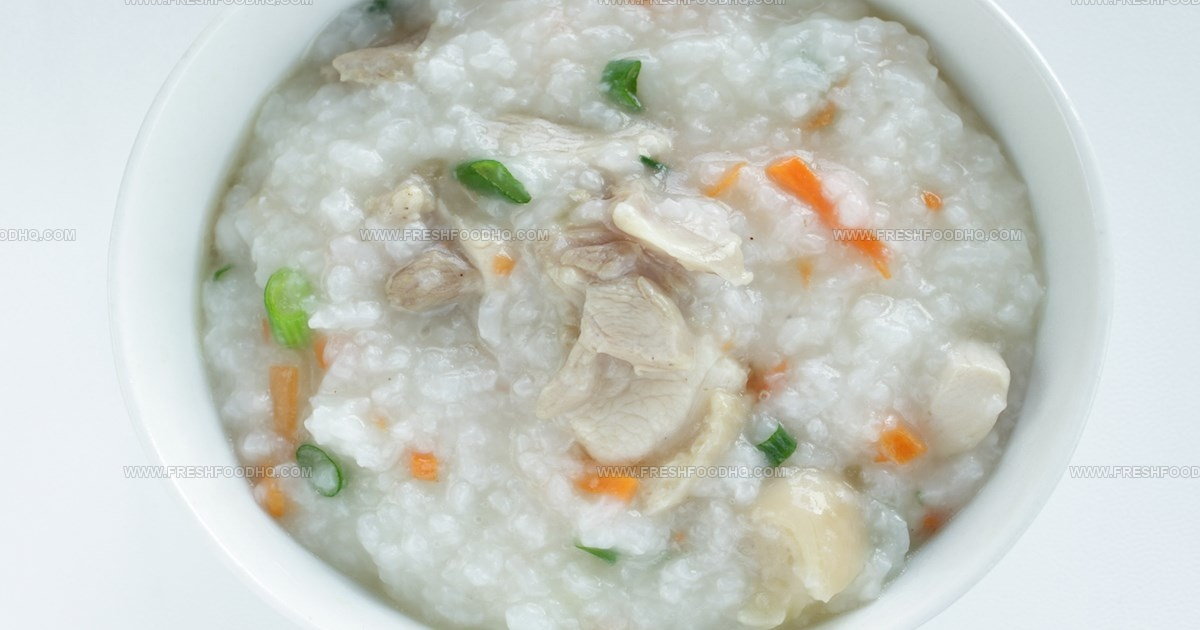
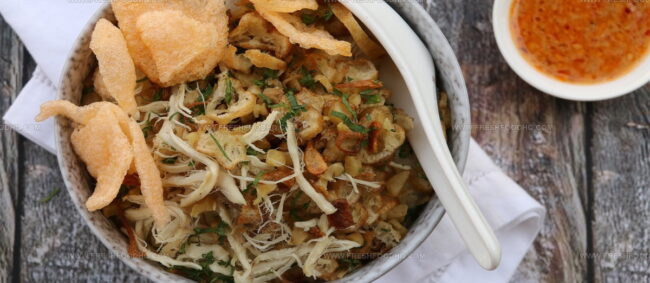
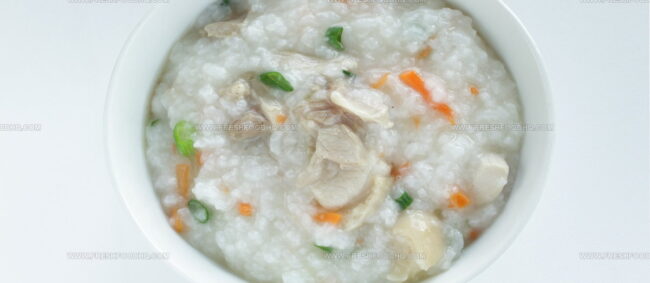
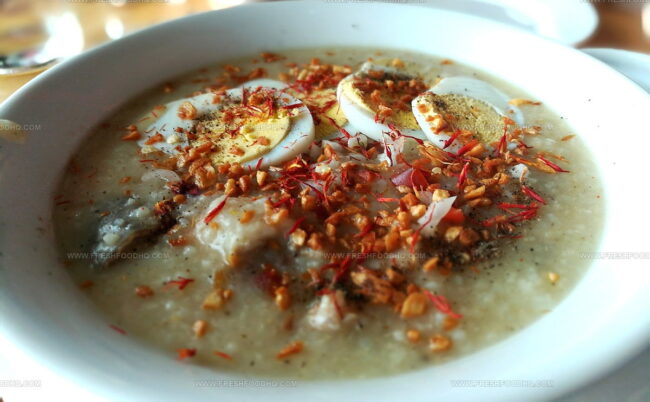
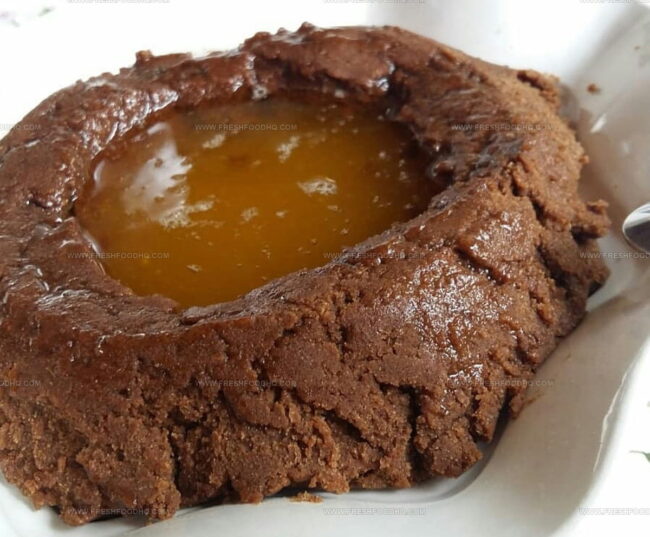
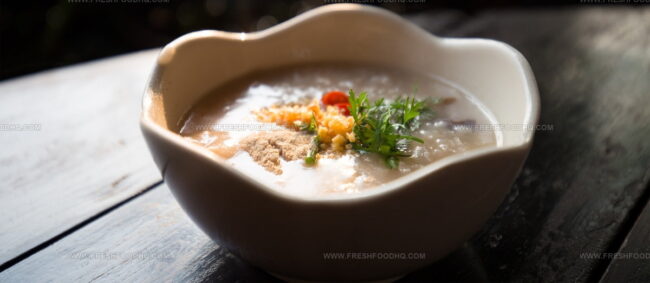
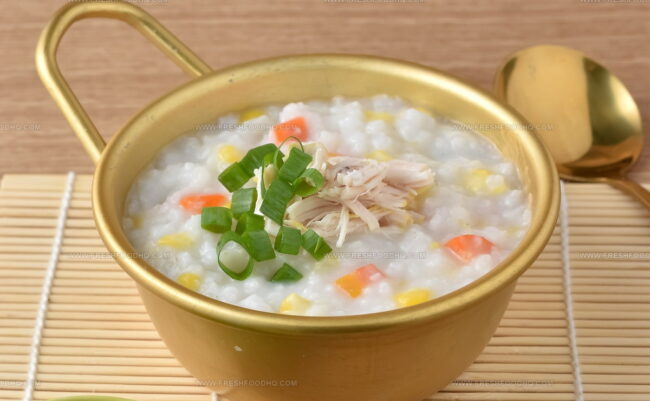
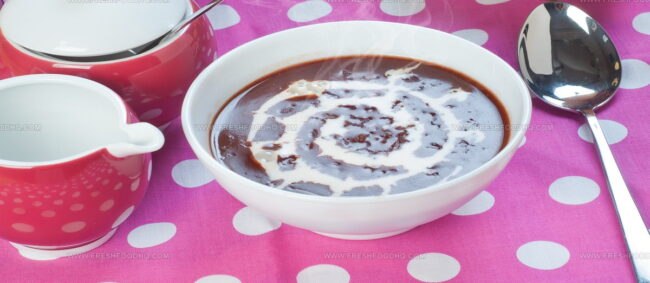
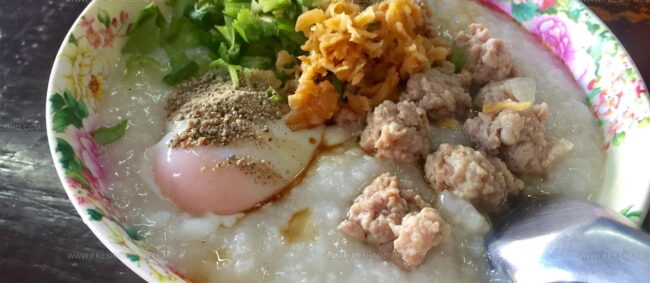
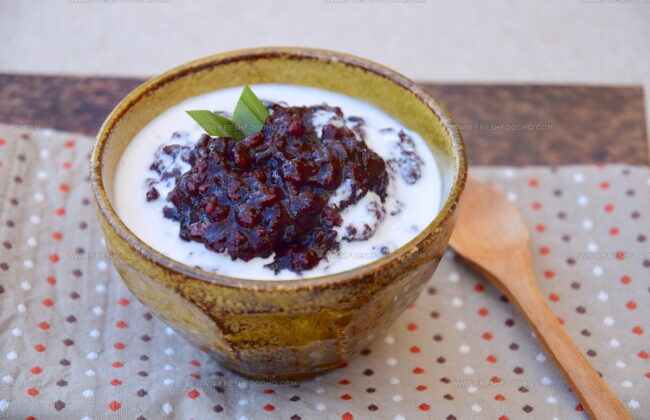
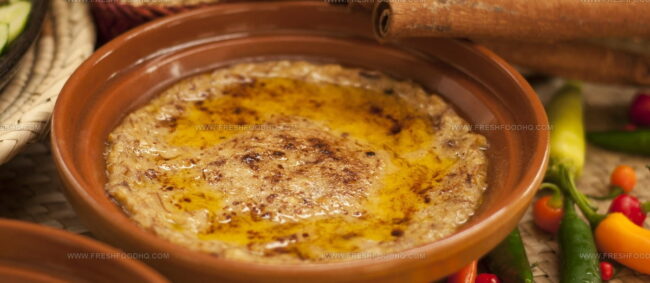
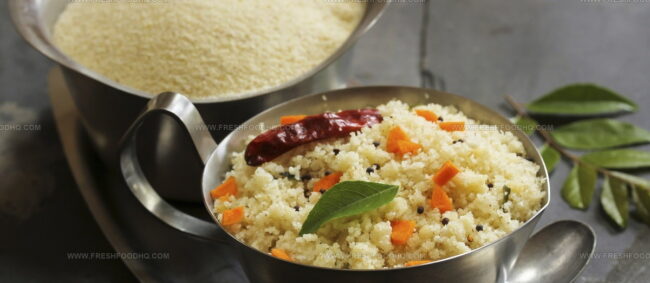
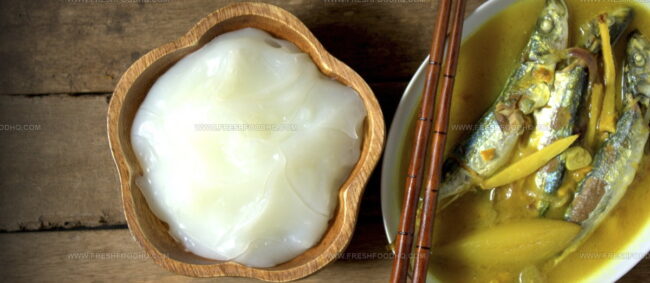
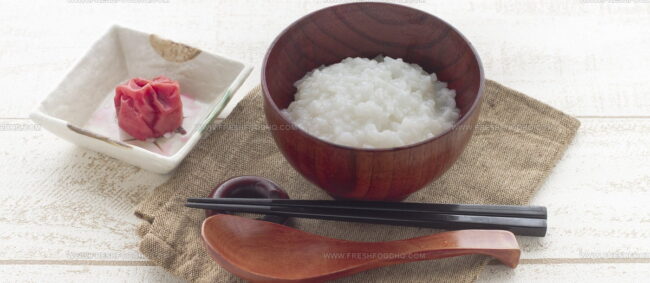
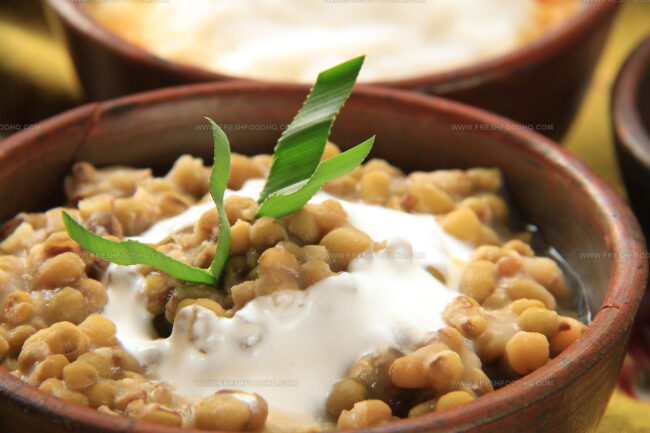
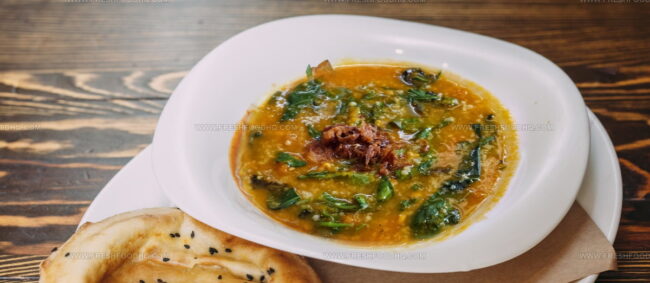
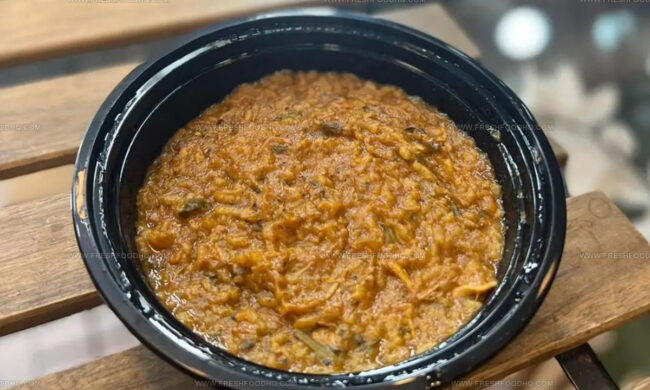
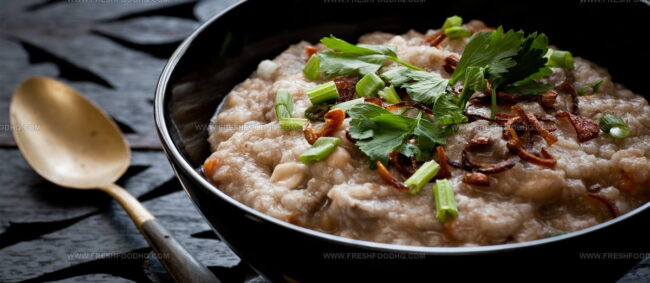
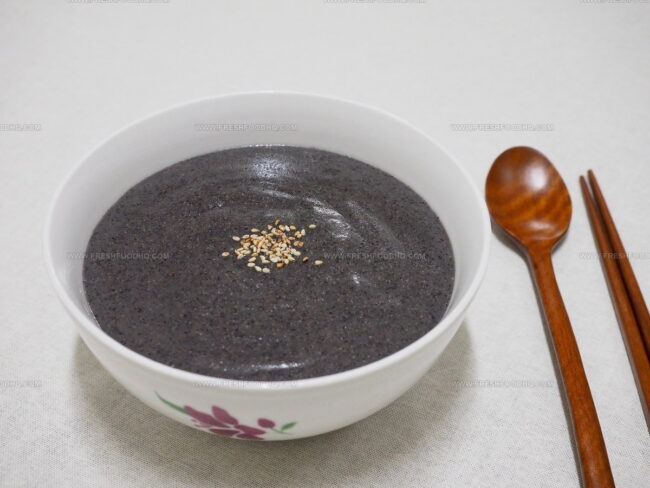
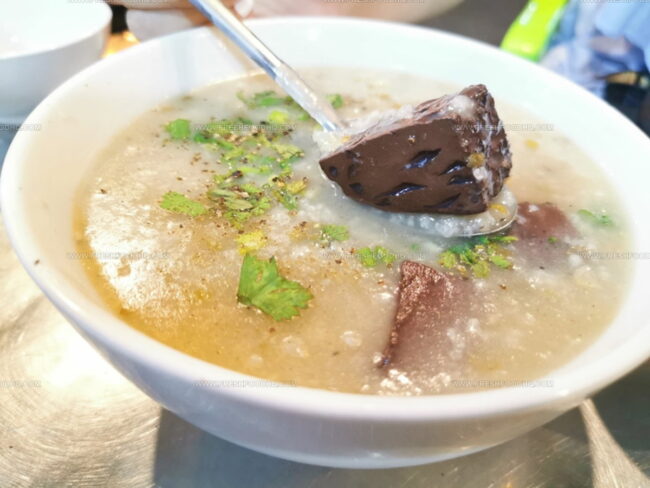
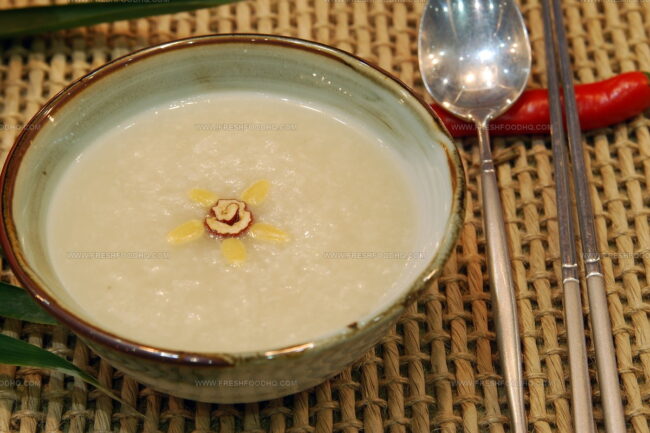
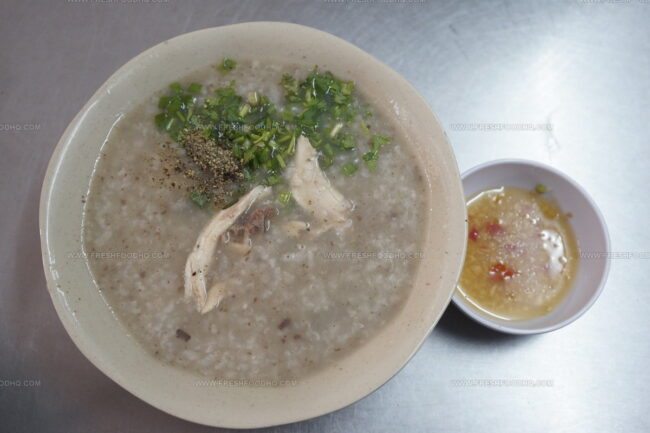
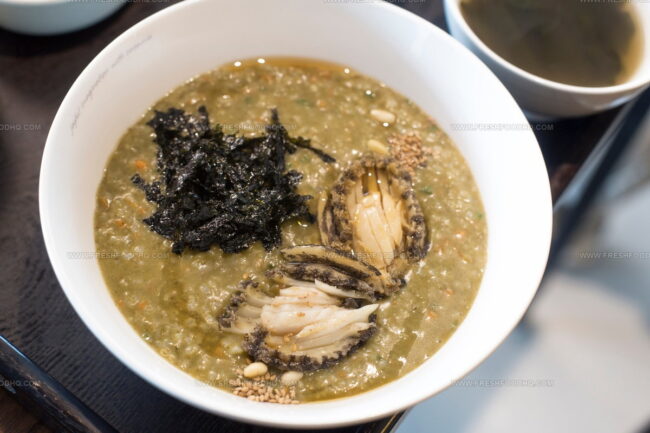
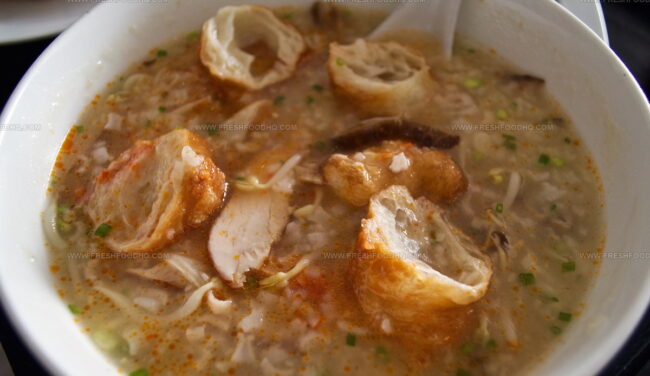
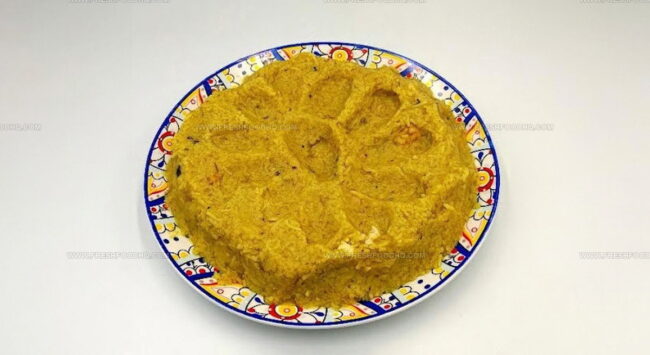
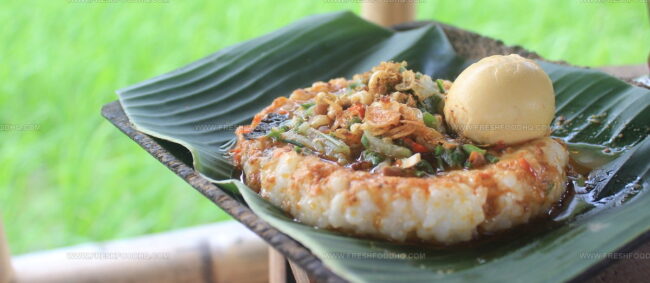
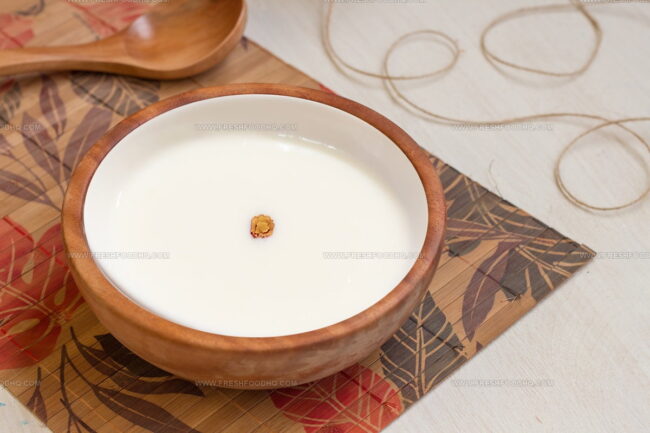
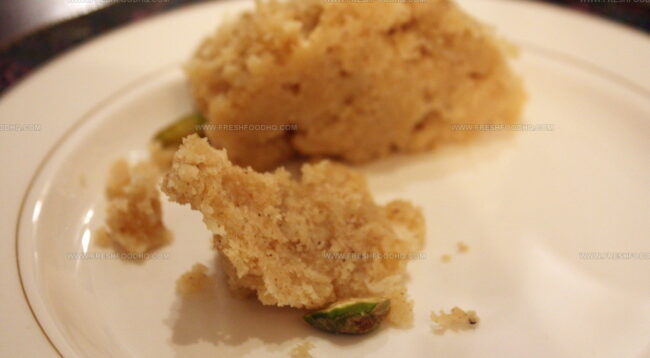
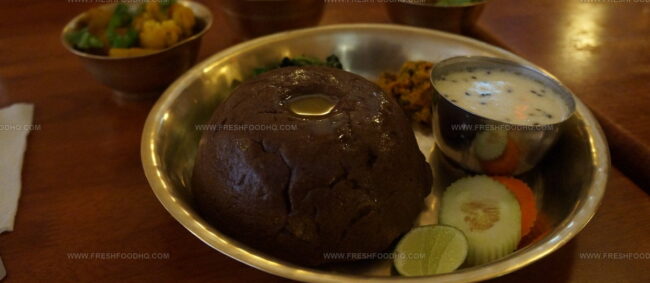
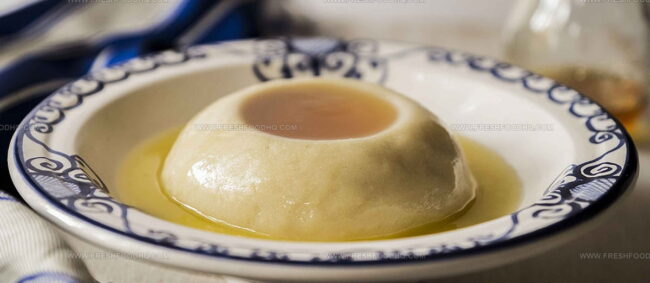
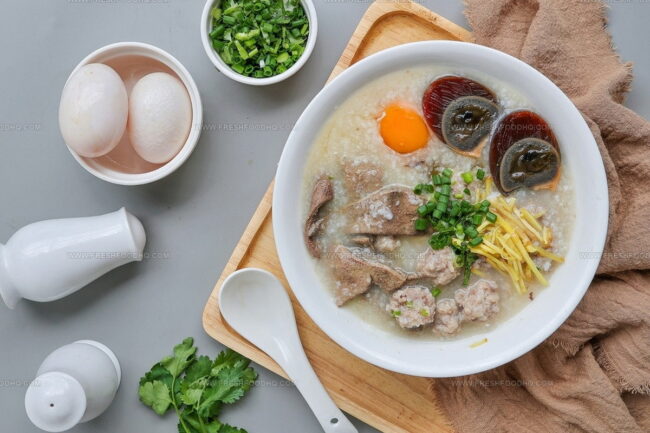
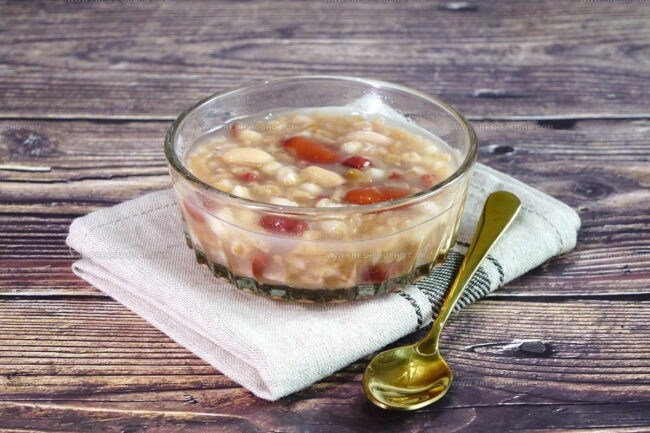
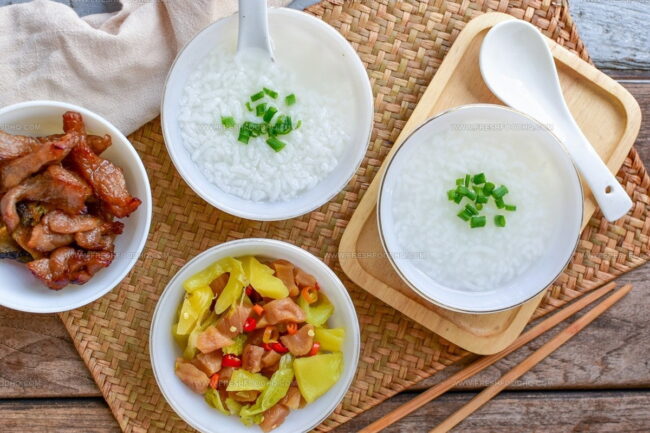
Ethan Caldwell
Founder & Culinary Innovator
Expertise
Farm-to-table cooking, Seasonal recipe creation, Culinary storytelling, Food photography and styling
Education
The Chef’s Academy (Indianapolis, IN)
Ethan didn’t just fall in love with food, he grew into it, surrounded by fields, farmers’ markets, and family meals that told a story.
After sharpening his skills at The Chef’s Academy, he took his passion straight into the farm-to-table movement, working side-by-side with local growers and seasonal flavors.
He believes every recipe should feel like a walk through a summer market: colorful, fresh, and full of possibility.
Outside the kitchen, Ethan’s idea of a perfect day is hiking mountain trails, digging into heirloom vegetables, and hosting casual dinners where seconds are always encouraged.